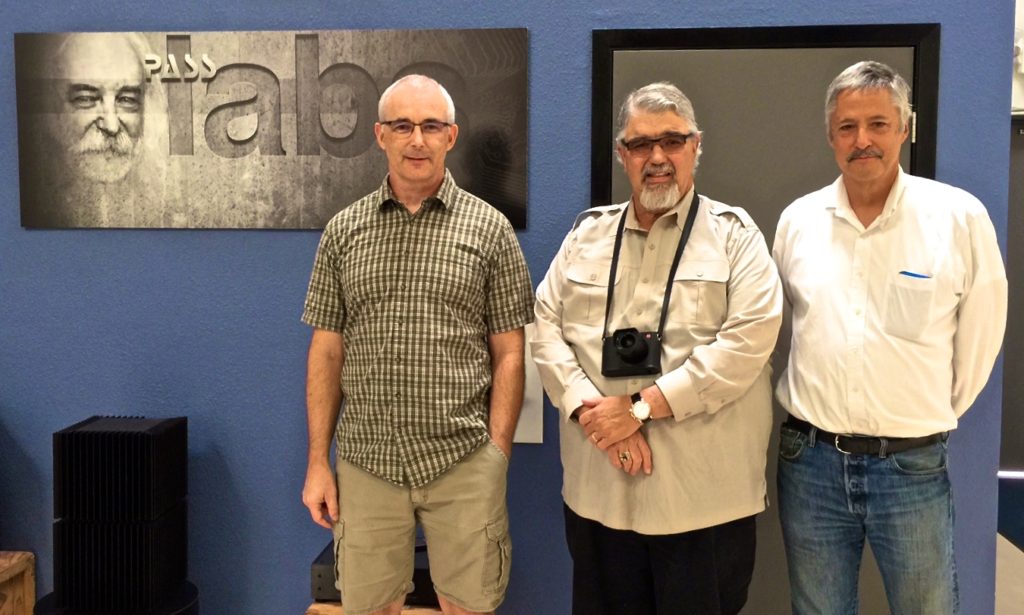
A couple of weeks ago, Becky and I were privileged to have Desmond Harrington and Ken English show us around the Pass Labs factory in Auburn, California. It was truly an honor just to stand in the front room of their plant and see their company nameplate that pictures Nelson Pass. Below the nameplate, they display a collection of some of their landmark products from the past. For over 40 years, Pass Labs has been designing some of the best-sounding amps ever made. And, as I confessed in my preview to this review, I have admired Nelson’s amps since the very first one was released.
Pass Labs’ 43-year history that continues today has earned them their esteemed reputation. Most audiophiles know their name, and many own or have owned something from Pass Labs. Their amps/preamps can be found driving some of the best systems at audio shows, and they are frequently mentioned in show reports.
So How Are Pass Labs Amps/Preamps Made?
We learned a lot on this tour, and we wanted to share as much as we can remember, but our first impression was that the factory is not as large as you might imagine. The entire tour easily took less than an hour, and we walked through the manufacturing process and met the people who are responsible for each step.
To ensure quality, they keep as much of their production as possible in-house, and they hire local people. It’s no surprise that many of their employees have been with them for some years.
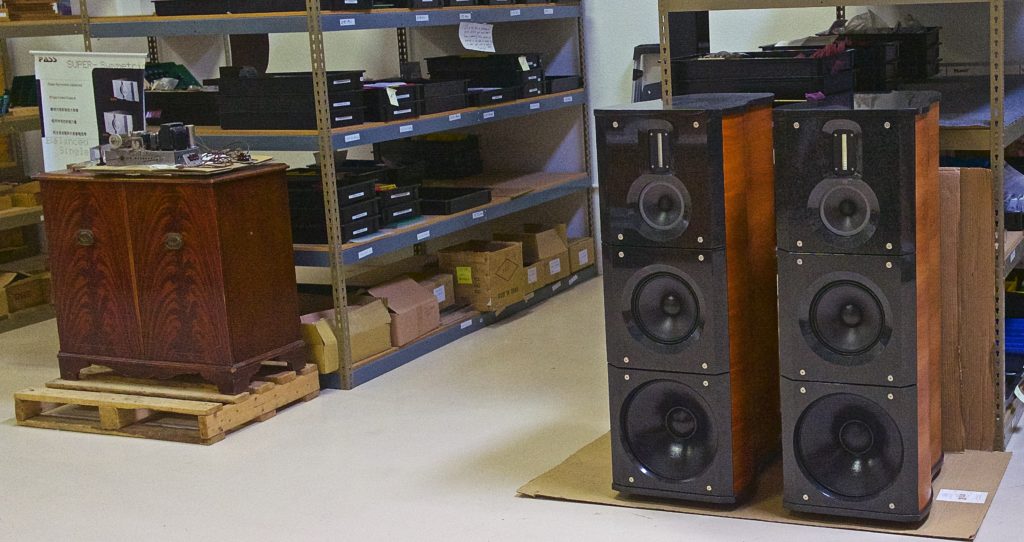
The first things we saw when stepping from the offices into the production area were the Pass Labs Rushmore speakers that are no longer in production and a vintage RCA tube console. The RCA tube console was not what I expected to see, but maybe I shouldn’t have been surprised considering that a couple of years ago at the California Audio Show, Pass Labs brought out DIY reference speakers designed by Nelson Pass. These speakers had vintage Tannoy drivers mounted in vintage Jensen cabinets. Pass had turned the Jensen cabinets upside down so that the space that was meant for the compression horns was tuned to vent the Tannoy drivers. Pass said the reason that these were reference speakers was that they allow the listener to really hear how any amp from 10 watts to 500 or more will perform. Desmond expressed Pass’ philosophy saying, “We don’t chase download factor. We go by sound, and we don’t build test equipment.”
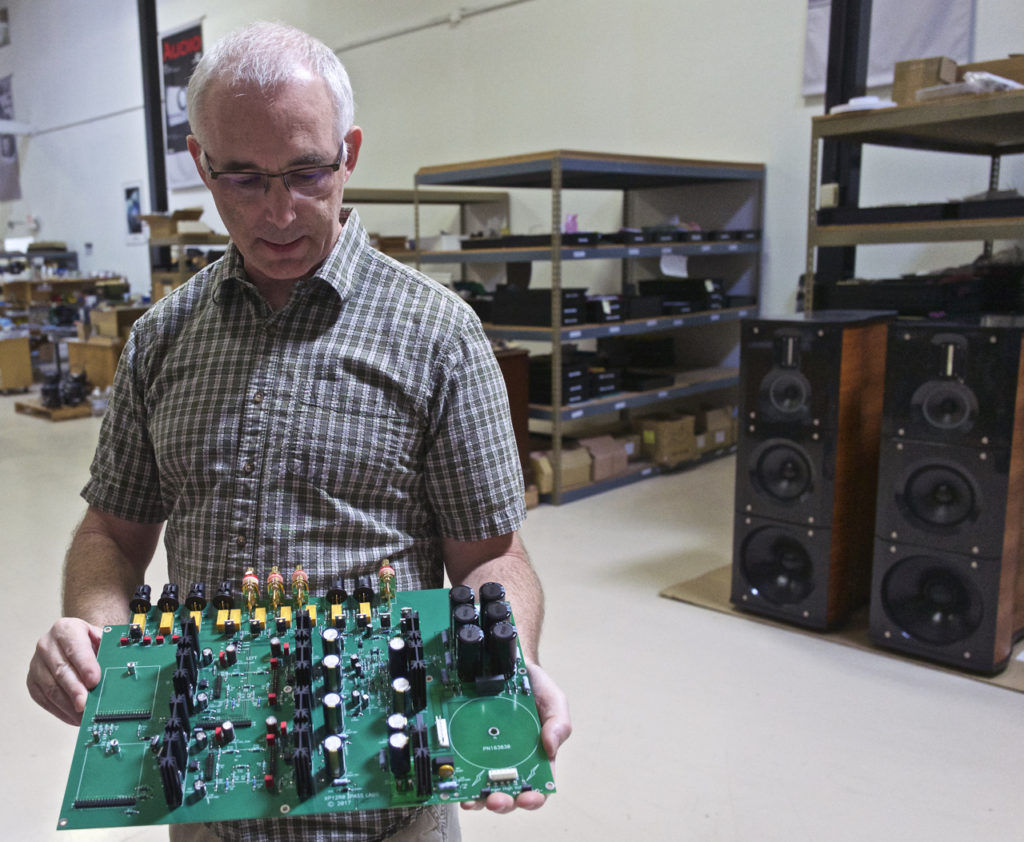
Desmond began the tour by showing us a circuit board before it had been through inspection. These are assembled there at Pass Labs by hand.
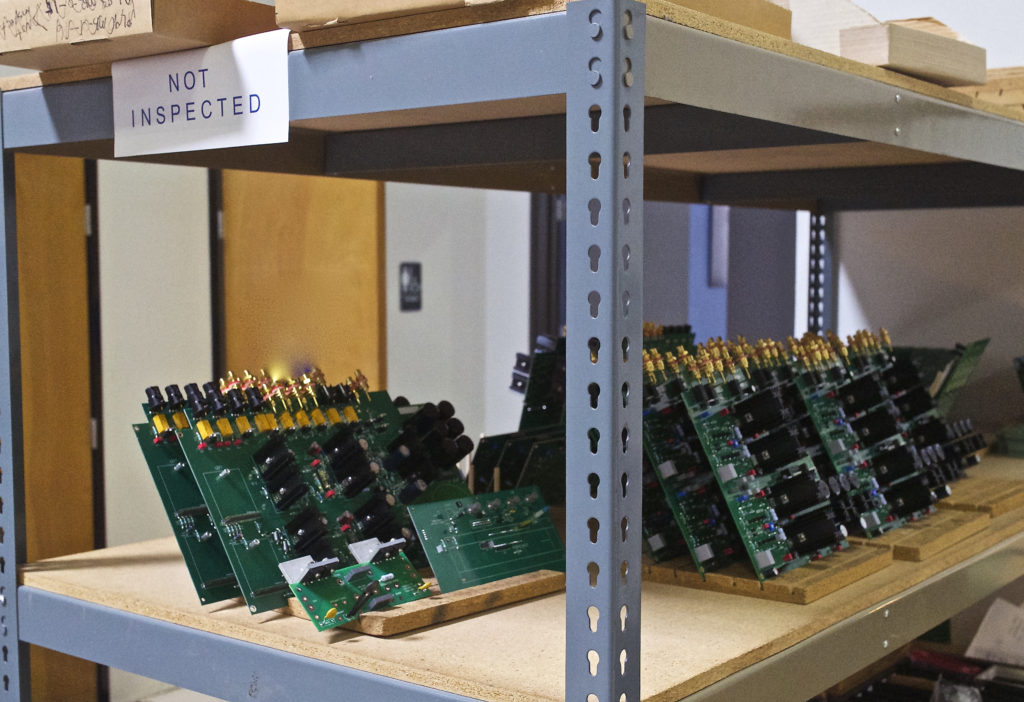
After assembly, the circuit boards are moved to a shelf with an incredibly fancy sign, well at least a sign that is easy to understand. There they sit to await inspection by a technician.
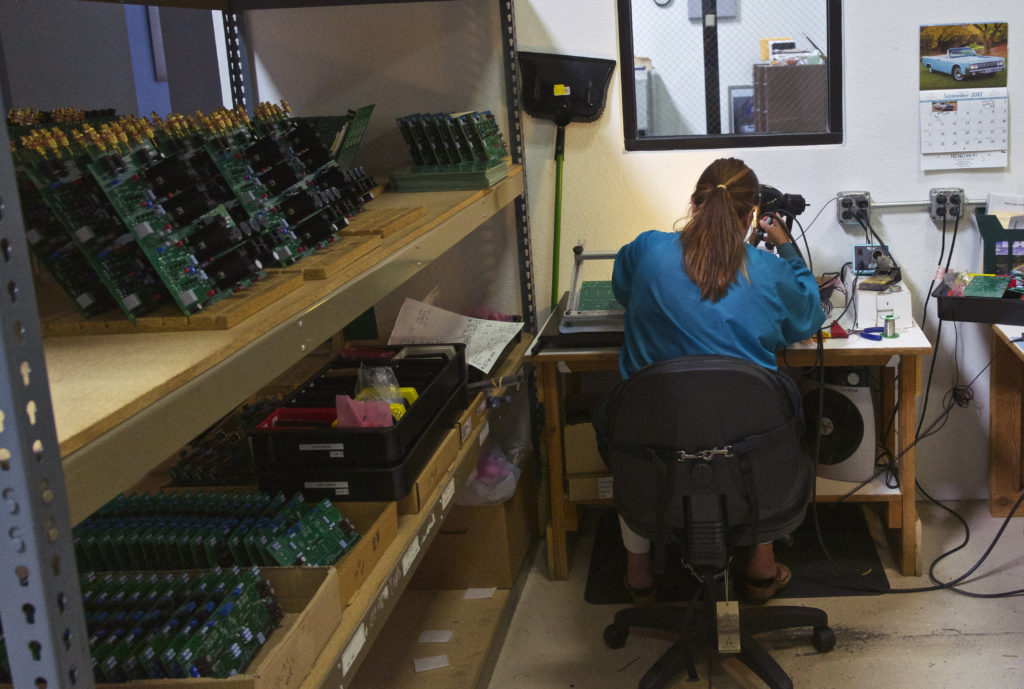
After inspection, the boards are moved to another shelf with another one of those fancy signs that says, “INSPECTED.”
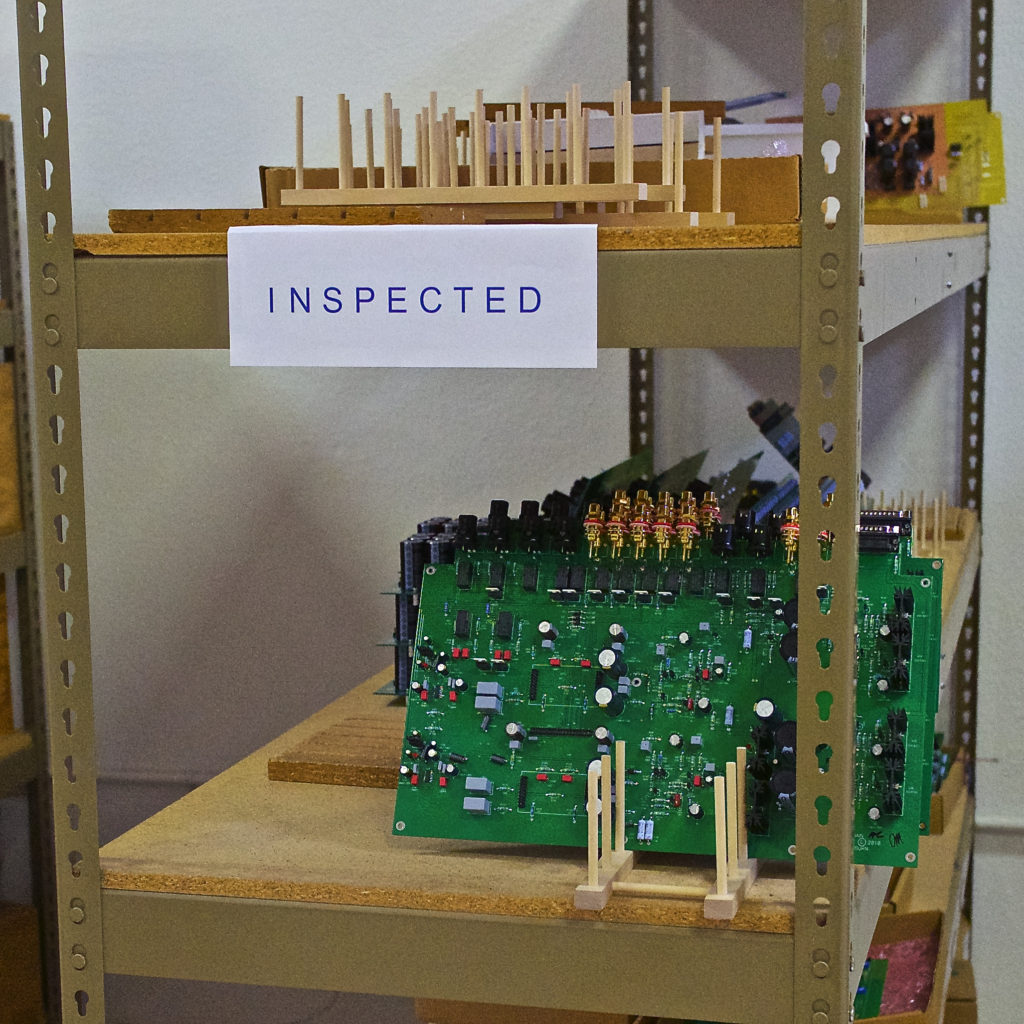
I could not believe the size of the transformers used in the Pass amps. It is safe to say that they take the power supply of the amps very seriously. The photo below shows the transformers for the XA160.8 monoblocks and the XA30.8 stereo amp.
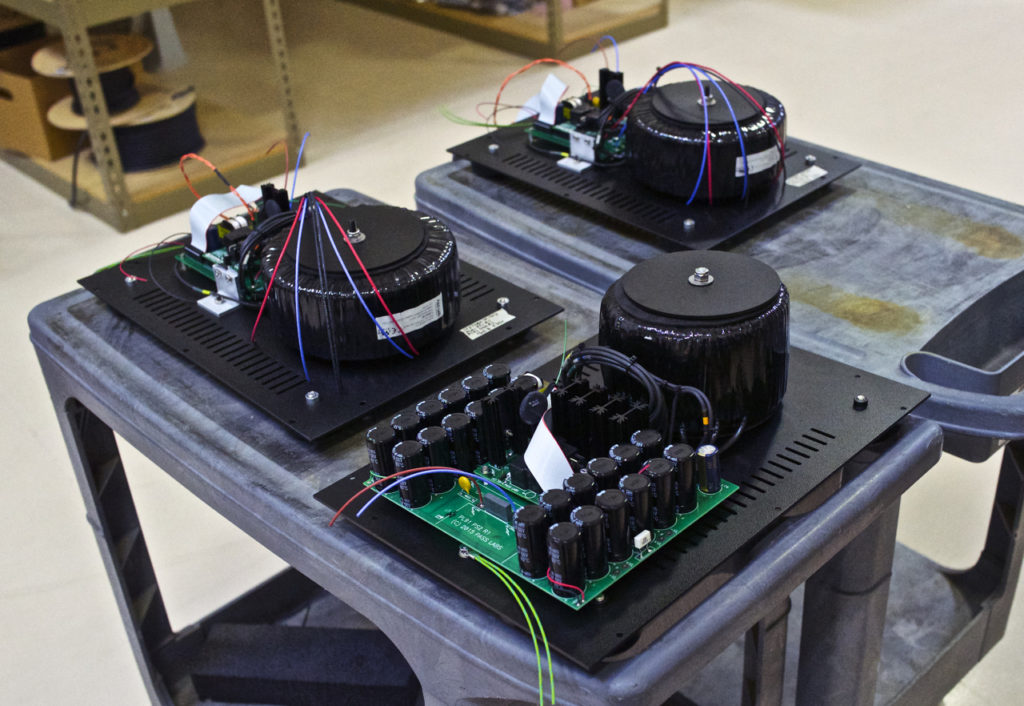
Pictured below are two banks of devices waiting to be put into an amp. Pass uses so many devices to make sure that their amps are more reliable.
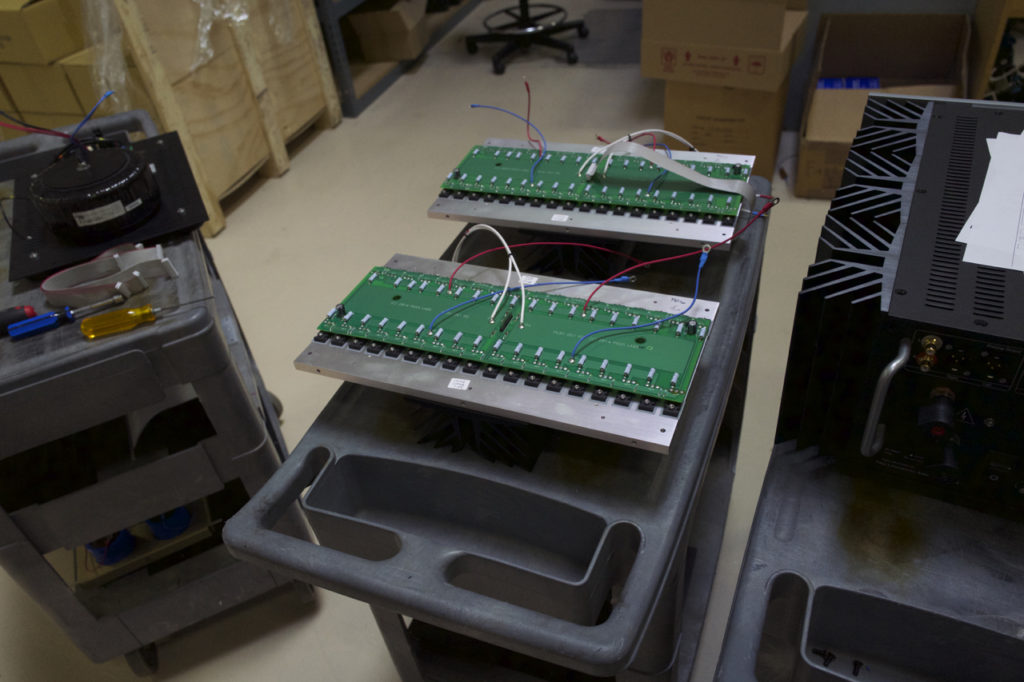
One of the few complaints I’ve ever heard about the Pass Labs XA.8 amps is how big and heavy they are. When you see them being made and you see how many different components and devices they each have, you can understand why they are so big and heavy.
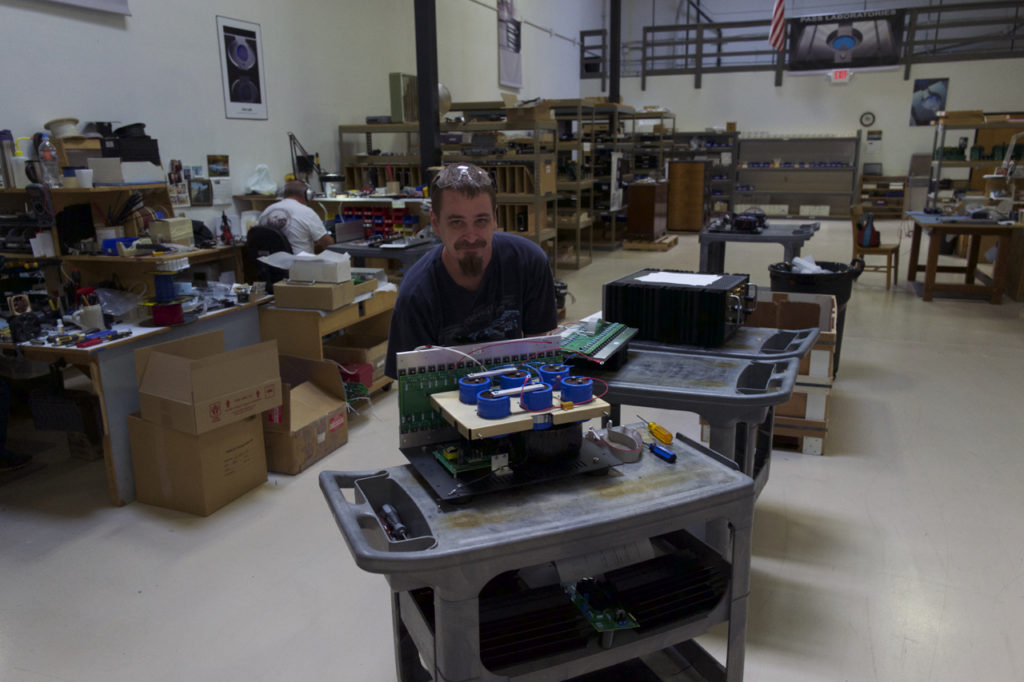
Then, there is the final assembly before burn-in. This step is when it becomes a beautiful Pass XA amplifier.
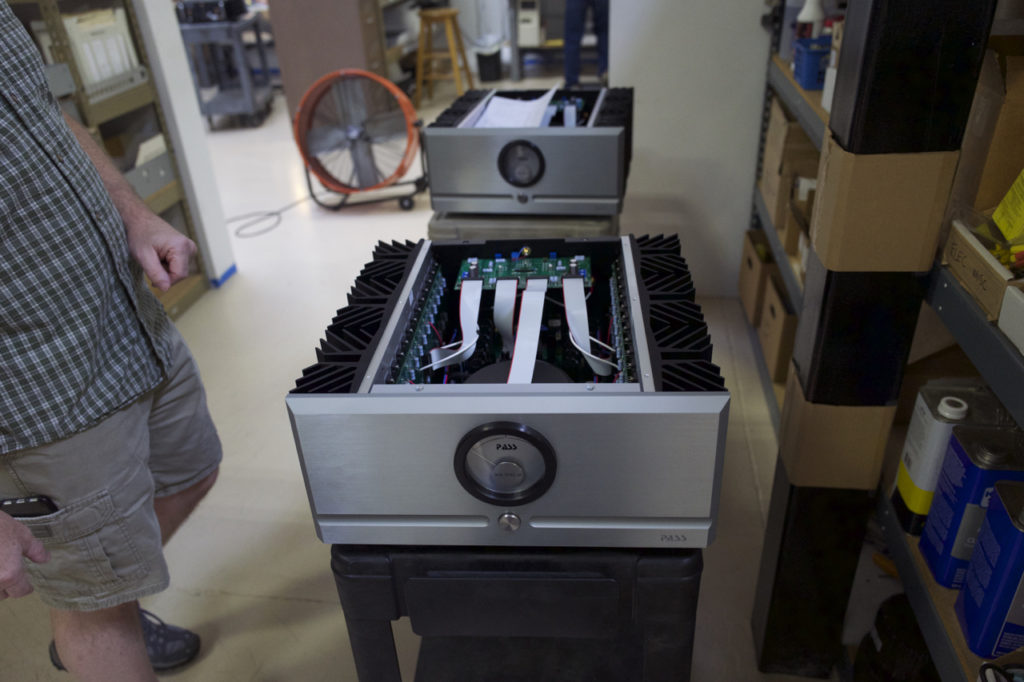
So far, all the pictures I’ve included here have been of power amplifiers, but the picture below is of their integrated amps. One of the interesting things we learned was that the integrated amps were most desired by Europeans and the separates by Americans. While Asia is one of their biggest markets, they have been surprised that Korea is by far and away their biggest market for headphone amps.
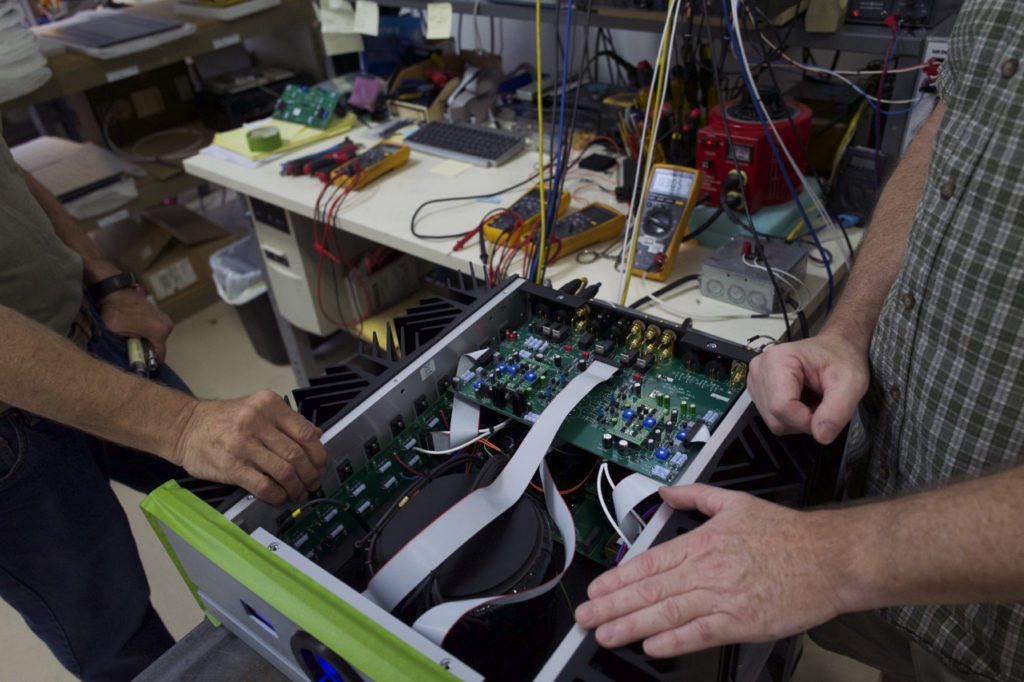
After the amps and preamps are assembled, they are taken to a room that is kept at the same temperature year around for break-in and biasing. This assures that the bias of every Pass amp that goes out is identical. All Pass amps are burned in by running power through them for three days.
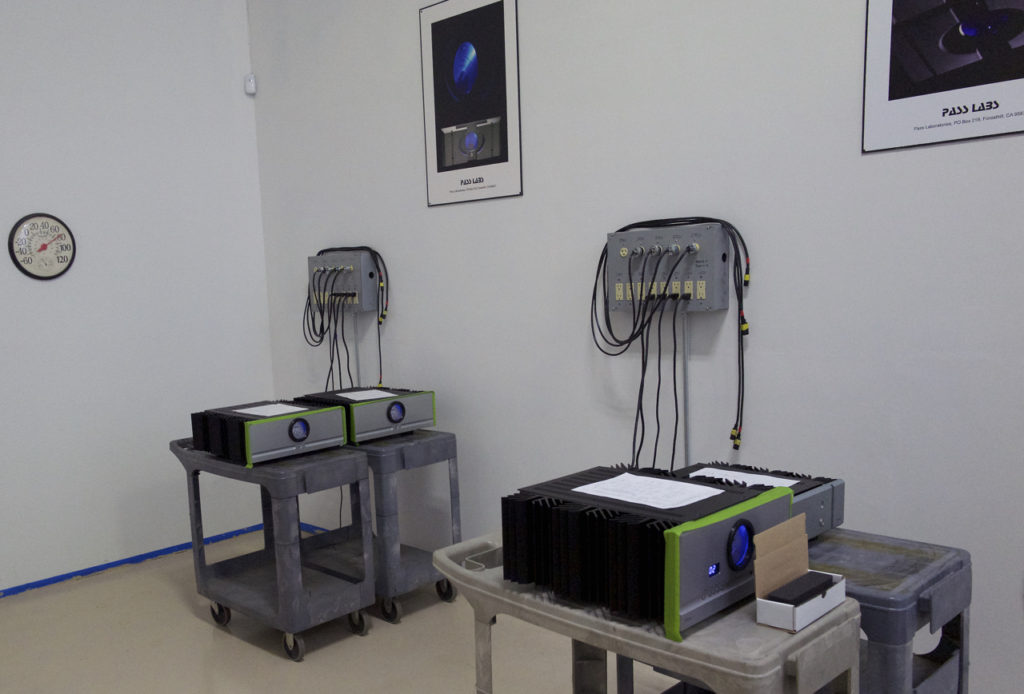
Speaking of finished products, pictured below are shelves full of beautiful front panels that are waiting to adorn amps or preamps. These beautiful front panels are made locally in Northern California from a single slab of aluminum with beveled edges. All of the work on the front panels is hand done and hand anodized to precisely match the body color the actual amp or preamp it will go on.
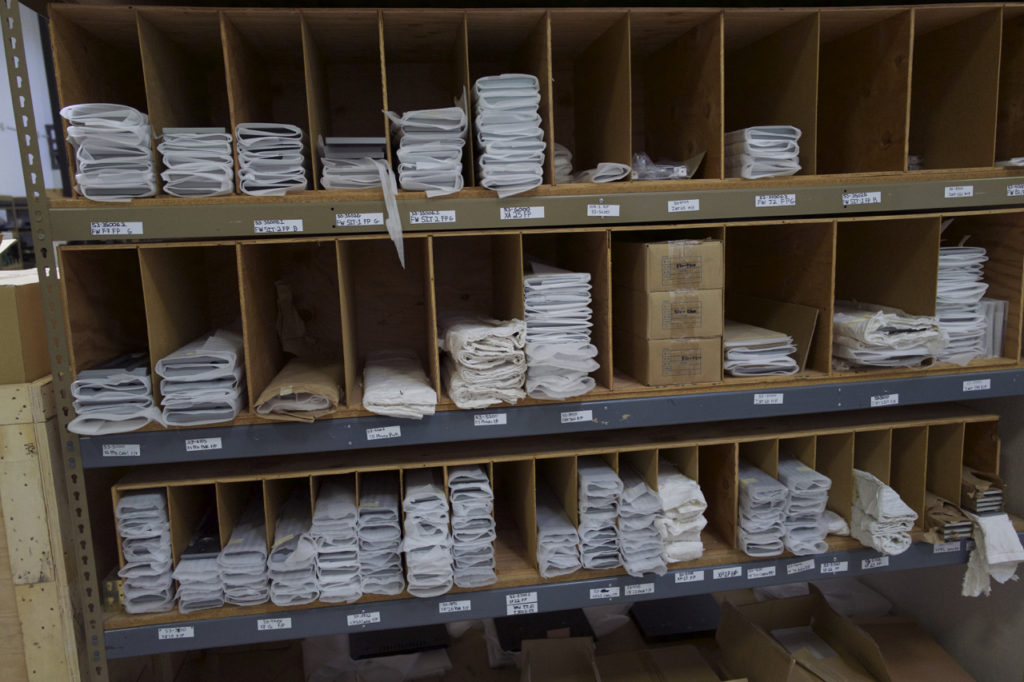
Pass Labs’ Global Market
When we stepped out of the production area, we noticed two final areas, a large parts storage area and a shipping area. Pass Labs is sitting on a large collection of parts for the products that they have made. “There’s never been a Pass Lab’s product made that we don’t have parts for.”
As for the shipping area, while the US is the single largest market, Pass Lab amps and preamps are sold all over the world. Usually, Pass Labs sells through dealers although there are occasional one-off sales to members of the audiophile industry, for example, a sale to another audio manufacturer. Desmond told us that their most unusual sale ever was to an audiophile who is the only inhabitant of a small island off of the coast of New Zealand. Well, hopefully, this buyer has a great music collection to keep him company!
Again, we’d like to express a big thank you to all of the people we met at Pass Labs. We appreciated your time and the obvious dedication you have to you work. Next time we look at the Pass Labs name on a piece of equipment, we will think about all of the steps that were required to turn out the finished piece.
?For more on Pass Labs, read our review of the Pass Labs HPA-1 amplifier.

I suspect you meant to say vintage Jensen speaker cabinets, not Janszen. David Janszen utilized electrostatic panels, not compression horns.
Just FYI.
Good catch! Thanks for the correction.
Hey Jack,
I just checked the site again. You corrected the first Janszen but not the second reference.
Again, just FYI to be helpful.
Again, thanks! Got both of them corrected now.